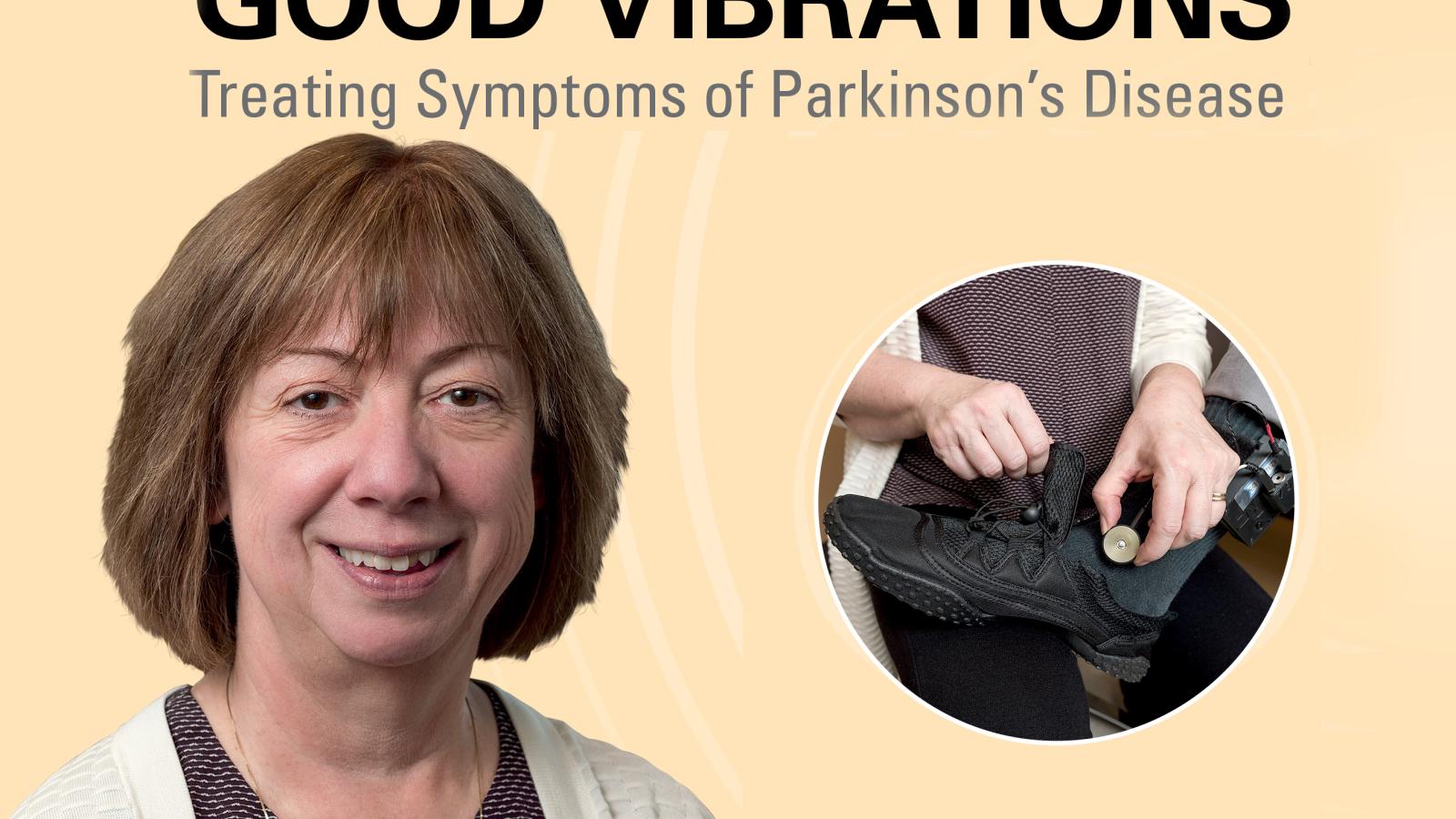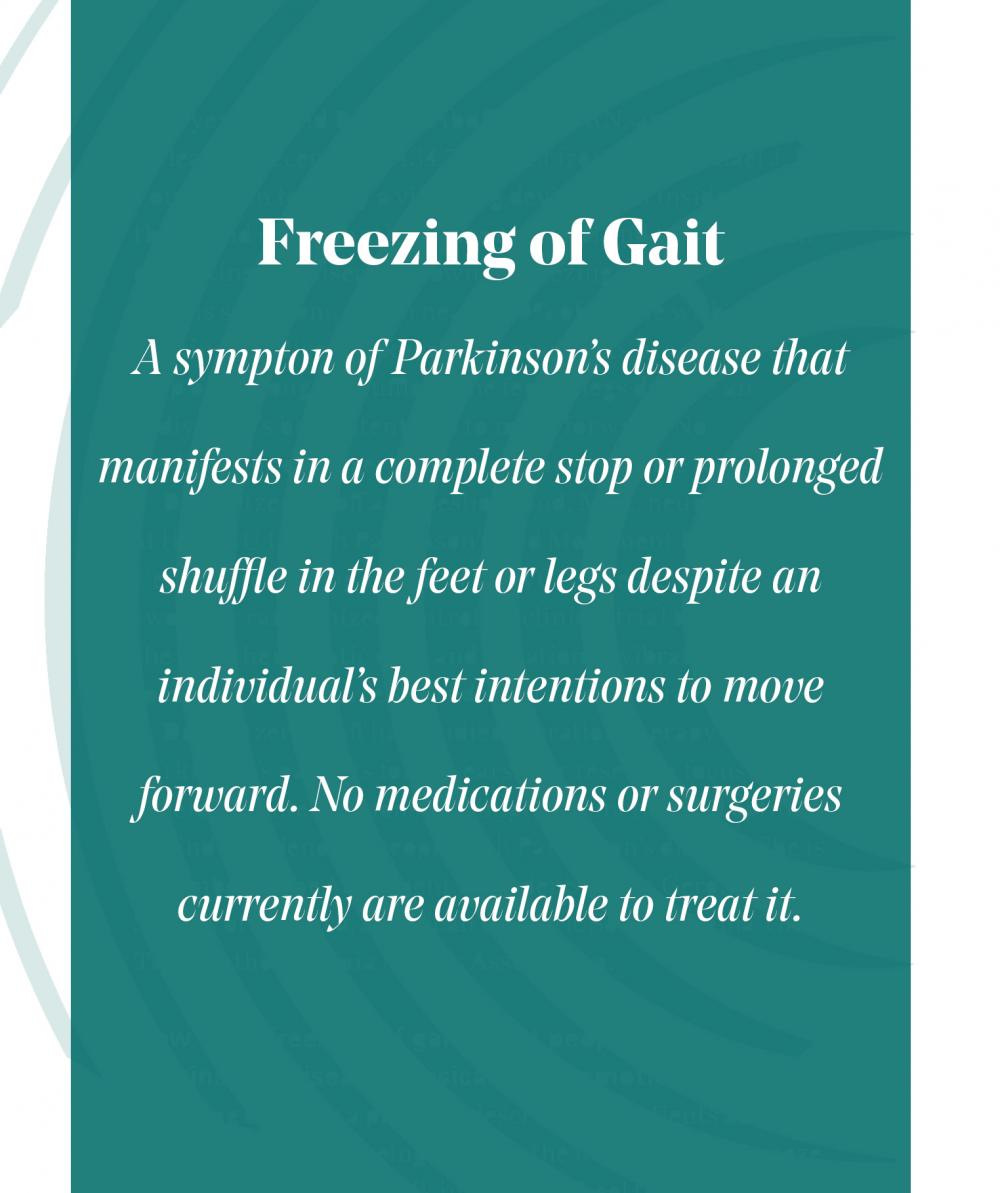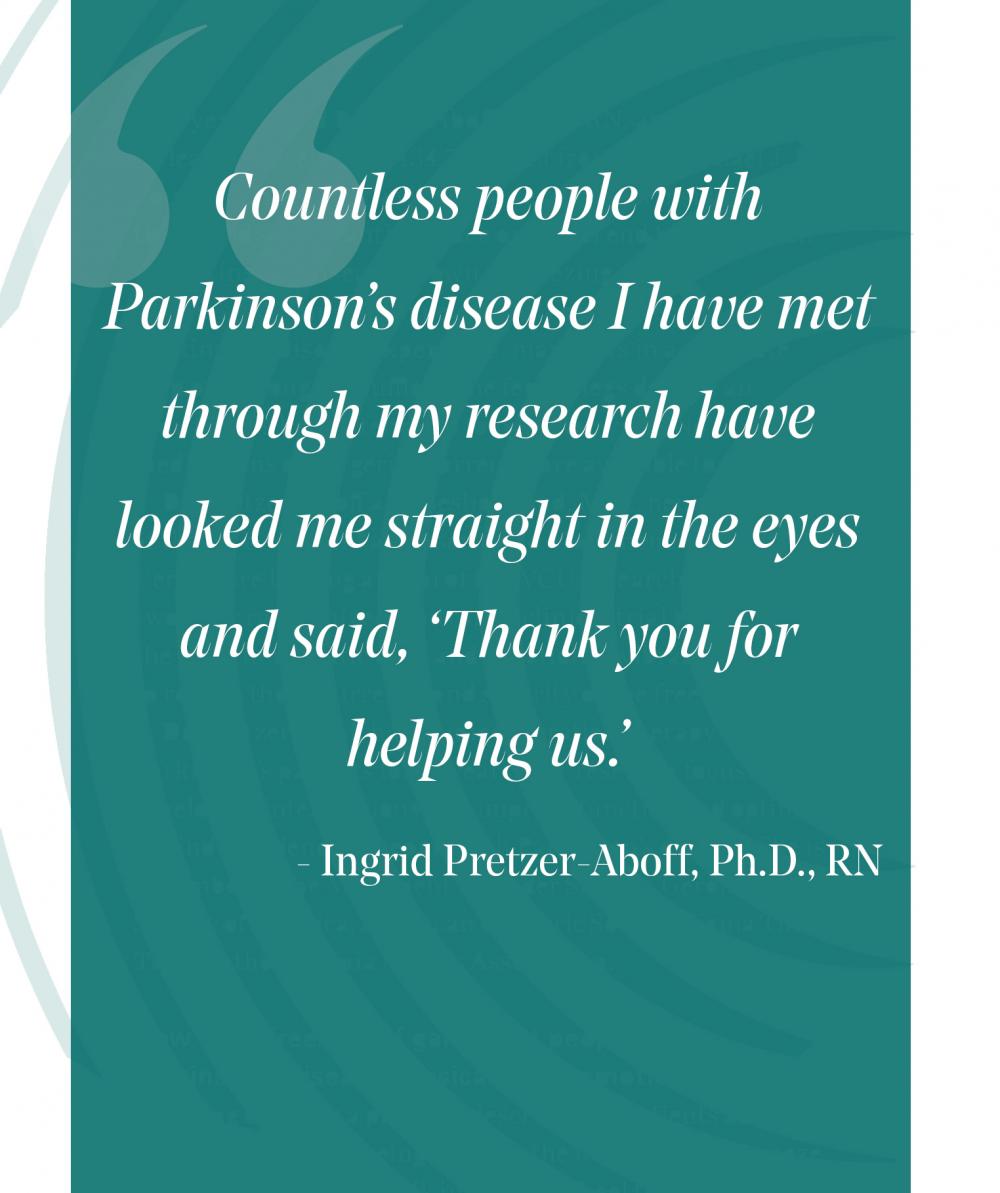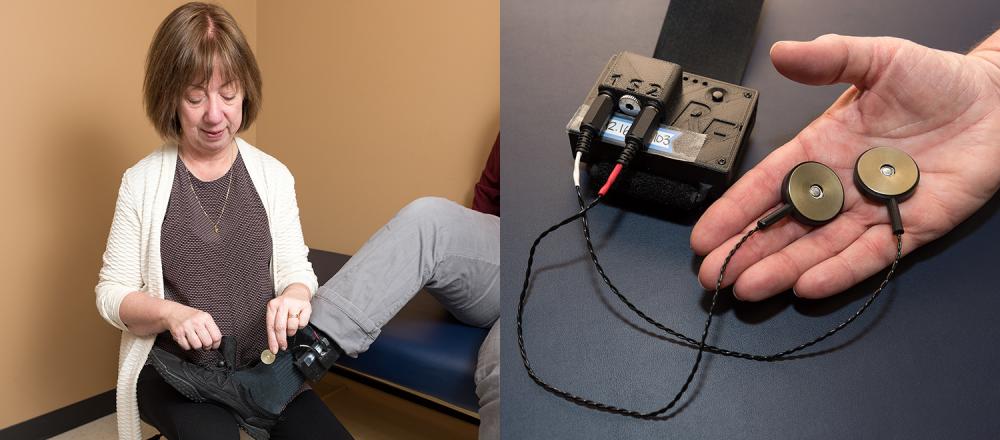
Good Vibrations
April is Parkinson’s Disease Awareness Month. The neurodegenerative disorder affects nearly 1 million people in the U.S.
Symptoms generally develop slowly over years and include tremor, limb rigidity, and gait and balance problems. One of the more prevalent symptoms related to gate and balance is known as freezing of gait, which nearly 60% of people with Parkinson’s disease experience. It manifests in a complete stop or prolonged shuffle in the feet or legs despite an individual’s best intentions to move forward. No medications or surgeries currently are available to treat it.
 Last year, VCU School of Nursing researcher Ingrid Pretzer-Aboff, Ph.D., RN, and several VCU colleagues received a $434,715 grant from The Michael J. Fox Foundation to study a vibrating device worn inside the shoe that could significantly reduce or put an end to freezing of gait.
Last year, VCU School of Nursing researcher Ingrid Pretzer-Aboff, Ph.D., RN, and several VCU colleagues received a $434,715 grant from The Michael J. Fox Foundation to study a vibrating device worn inside the shoe that could significantly reduce or put an end to freezing of gait.
Dr. Pretzer-Aboff and Leslie Cloud, M.D., neurologist at the VCU Health Parkinson’s and Movement Disorders Center, are leading a team of five VCU researchers in a two-year randomized controlled clinical trial to assess the best therapeutic dose and duration of vibration to reduce the occurrence and severity of the freeze.
Dr. Pretzer-Aboff has studied vibration therapy in Parkinson’s patients for 10 years. Her research focuses on developing interventions that improve function and optimize the independence of people with Parkinson’s disease. She is a member of the Movement Disorder Society, Gerontological Society of America, American Geriatric Society, Sigma Theta Tau and the Virginia Nurses Association.
For our most recent issue of NEXT magazine, we sat down with Dr. Pretzer Aboff to discuss her research. The conversation is below.
How does freezing of gait affect people with Parkinson’s disease physically and emotionally?
Freezing of gait is a problem described by patients as the feeling of their feet being glued to the floor. During a freeze, they are unable to walk in a normal heel to toe fashion and cannot move forward.
Episodes can last seconds or minutes and are often triggered when initiating walking or by the person’s physical surroundings, such as cluttered spaces or small doorways. Even the time pressure of having to enter or exit an elevator before the doors close can trigger a freeze.
People with freezing of gait are also at risk for falls. As one can imagine, it can be quite difficult for a person experiencing freezing of gait to freely move in their homes and in community settings as they once did.
For some, it can be quite isolating as they end up staying home rather than risk freezing in public or falling. Patients experience stress and often depression as they lose their independence and rely on family and friends for assistance.
Is using vibration therapy to help people with Parkinson’s disease and freezing of gait a new concept?
No, the use of vibration to help people with Parkinson’s disease is not a new concept.
About 200 years ago, Dr. Jean-Martin Charcot invented a vibrating chair. As a neurologist and scientist, he was curious of the effect it would have on his patients who suffered from neurological disease. This included people with Parkinson’s disease. It was reported at the time that people with Parkinson’s disease seemed to “walk more freely” after being on the chair.
Over the years, various people studied vibration’s effect on Parkinson’s patients and it was anecdotally and empirically noted that there was an improvement in several symptoms.
However, no one has taken the concept as far as we have. That is, we are seeking to answer whether there is a specific dose of vibration frequency, amplitude and duration of treatment that optimizes gait of people with Parkinson’s disease.
What is it about your research that motivates you each day?
 For the last three decades, I have worked with people with Parkinson’s disease and their family members in acute care, community and research settings.
For the last three decades, I have worked with people with Parkinson’s disease and their family members in acute care, community and research settings.
I have met many people living with Parkinson’s disease who, despite all the difficulties they experience, can still tell a good joke, share their experiences, teach others about this puzzling disease and remain grateful for help they get from their families, friends and healthcare providers.
Countless people with Parkinson’s disease I have met through my research have looked me straight in the eyes and said, “Thank you for helping us.” I am motivated every day by the patients I work with to try to help them deal with their disease.
Why is the MCV Campus at VCU Health a good place for you to conduct your research?
I moved here a little over two years ago and I honestly feel like I found the perfect place to conduct my research and move it forward. The MCV Campus and VCU Health collectively have a culture that supports innovative research, new ideas and collaborative work. The wealth of knowledge, resources and talent here support the many facets of my current research and future ideas for projects. I work closely with Dr. Leslie Cloud and her research staff in the Department of Neurology, Dr. R.K. Elswick Jr., research faculty and staff at the School of Nursing, and students across campus. I recently received a VCU School of Nursing Innovation Grant that supports work with Hawa Stwodah in the School of the Arts’ Department of Fashion Design and Merchandising for a project to design a sock-like wearable device that incorporates the vibration technology. I am excited to be here at VCU as the research infrastructure is outstanding and opportunities for collaboration are infinite!
If you are interested in learning more about Dr. Pretzer-Aboff’s work with Parkinson’s disease, please contact Pamela Lowe, senior director of development at VCU School of Nursing, at 804-827-0020 or plowe@vcu.edu.



